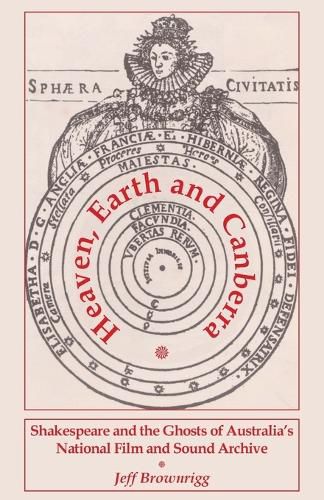Readings Newsletter
Become a Readings Member to make your shopping experience even easier.
Sign in or sign up for free!
You’re not far away from qualifying for FREE standard shipping within Australia
You’ve qualified for FREE standard shipping within Australia
The cart is loading…






This title is printed to order. This book may have been self-published. If so, we cannot guarantee the quality of the content. In the main most books will have gone through the editing process however some may not. We therefore suggest that you be aware of this before ordering this book. If in doubt check either the author or publisher’s details as we are unable to accept any returns unless they are faulty. Please contact us if you have any questions.
In 1984, after a somewhat acrimonious move out of the National Library of Australia, the newly minted National Film and Sound Archive took up residence in the old Institute of Anatomy in Canberra. From the first day, it seems, living archivists were not the only occupants of the building. The place had a colourful history associated with human and other animal remains, including racehorse Phar Lap’s heart and what was thought to be Ned Kelly’s skull. The fine art deco Institute building mostly cleared of soft tissue war-wounds floating in jars of preservative, as well as articulated skeletons, standing tall in elegant display cases. Within a year or two, as the beginner-archivists settled in, struggling with issues of identity and management, limited funding to preserve the nation’s sound and moving image heritage, workers began to see and to hear things. An accusation persisted that film and sound had been ‘deceitfully’ ripped out of the National Library. Also, sound and moving image seemed incompatible bed-fellows. Could that have been a cause of disturbances at the Archive? People saw pestering spirits on balconies and in shady corridors. Incomprehensible voices hung in the air. There was nothing in the Occupational Health and Safety Manual that covered accepted behaviour and best practice in haunted buildings. But the author found Shakespeare helped. The Bard’s works provided, perhaps, the largest catalogue of paranormal occurrences to compare and contrast with the encounters archivists described. Before long the National Film and Sound Archive was being touted as Australia’s most haunted building. This book presents stories from that haunting. Investigating likely causes, it offers a tentative explanation as to why ghosts seemed to arise to bother the living.
$9.00 standard shipping within Australia
FREE standard shipping within Australia for orders over $100.00
Express & International shipping calculated at checkout
This title is printed to order. This book may have been self-published. If so, we cannot guarantee the quality of the content. In the main most books will have gone through the editing process however some may not. We therefore suggest that you be aware of this before ordering this book. If in doubt check either the author or publisher’s details as we are unable to accept any returns unless they are faulty. Please contact us if you have any questions.
In 1984, after a somewhat acrimonious move out of the National Library of Australia, the newly minted National Film and Sound Archive took up residence in the old Institute of Anatomy in Canberra. From the first day, it seems, living archivists were not the only occupants of the building. The place had a colourful history associated with human and other animal remains, including racehorse Phar Lap’s heart and what was thought to be Ned Kelly’s skull. The fine art deco Institute building mostly cleared of soft tissue war-wounds floating in jars of preservative, as well as articulated skeletons, standing tall in elegant display cases. Within a year or two, as the beginner-archivists settled in, struggling with issues of identity and management, limited funding to preserve the nation’s sound and moving image heritage, workers began to see and to hear things. An accusation persisted that film and sound had been ‘deceitfully’ ripped out of the National Library. Also, sound and moving image seemed incompatible bed-fellows. Could that have been a cause of disturbances at the Archive? People saw pestering spirits on balconies and in shady corridors. Incomprehensible voices hung in the air. There was nothing in the Occupational Health and Safety Manual that covered accepted behaviour and best practice in haunted buildings. But the author found Shakespeare helped. The Bard’s works provided, perhaps, the largest catalogue of paranormal occurrences to compare and contrast with the encounters archivists described. Before long the National Film and Sound Archive was being touted as Australia’s most haunted building. This book presents stories from that haunting. Investigating likely causes, it offers a tentative explanation as to why ghosts seemed to arise to bother the living.